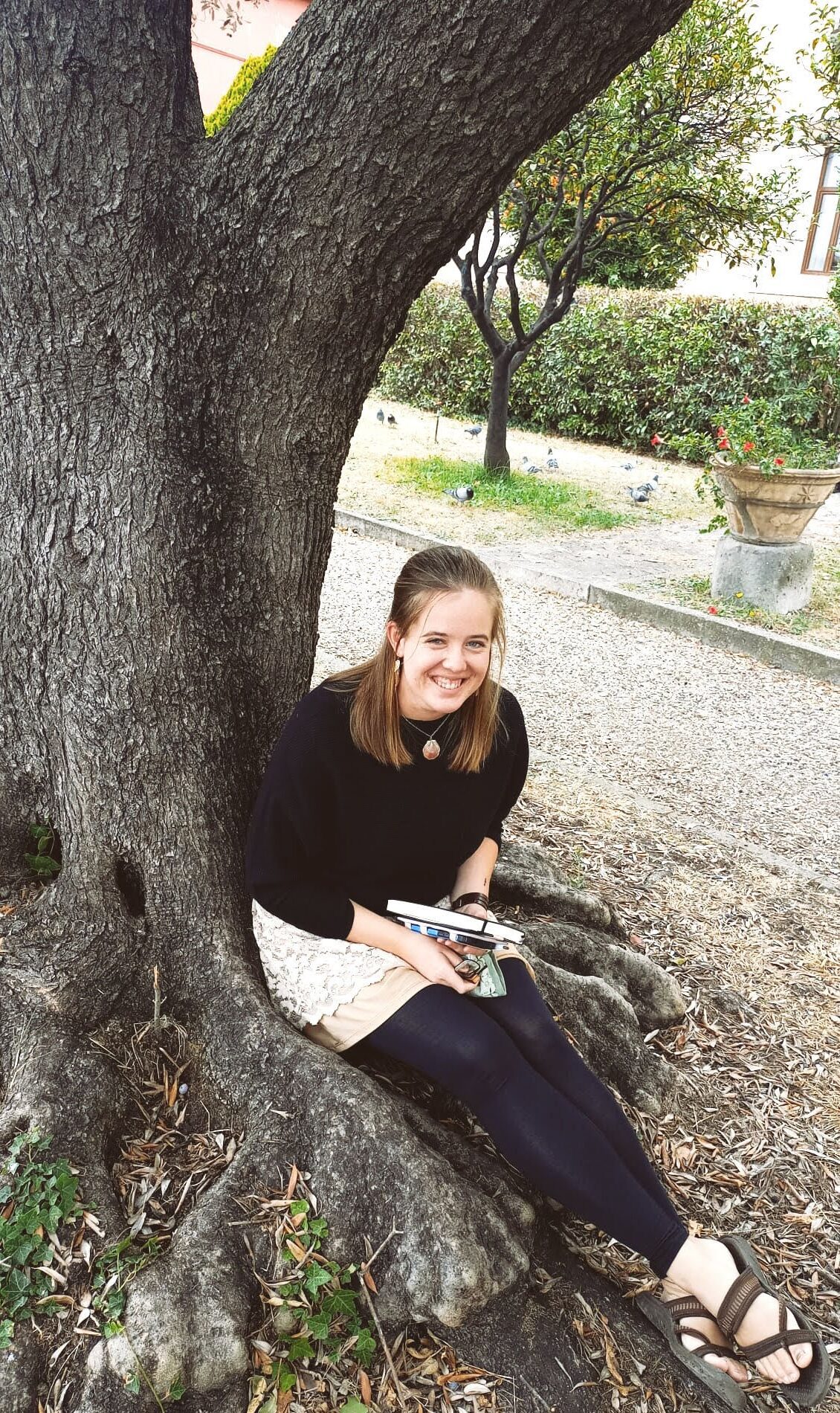Young Adult
The first time I went to Rome, my favorite place was the tomb of St. John Paul II in St. Peter’s Basilica. I was somewhat surprised by this, given that I was a history nerd in Europe for the first time, wandering a city that is thousands of years old.
But I probably shouldn’t have been surprised. JPII is one of my favorite saints — my Confirmation patron and one of the saints that I feel chose me as much as I chose him. Making contact with places he knew and lived in Rome has been profound and powerful and has happened throughout my trips to Italy. I’ve prayed at his tomb more times than I can count. Once I happened to be praying there at the right time to attend Mass in Polish. My friend was giving me a tour of the Angelicum, where she was studying, and then dropped me off so I could write under the tree where he used to work on his dissertation.
I did a solo weekend pilgrimage to Siena, where I concluded “33 Days to Merciful Love” on his feast day (Oct. 22) and found images and plaques honoring him all over the city. I went from Siena to Rome and, attending Mass next to a huge and beautiful picture of him at a side altar, I found myself in tears because I felt so loved by him.
These experiences might sound strange if you’re not used to thinking of the saints as real and active in our lives. But we believe them to be alive in heaven and part of the Body of Christ with us. I think my experiences match those of the people who met him on earth. People who met him or Mother Teresa say that they made you feel like you were the only person in the room. I think it’s one of the most beautiful hallmarks of holiness: that being intimately close to the God who is love means you yourself are an unmistakably clear beacon of love to everyone you encounter.
That tangible outflowing of love is the quality I admire most in a person. Even when it’s still being cultivated and hasn’t reached the full, living-saint level, it’s incredibly beautiful. I’ve seen versions of it in friends and mentors, and also every time I’ve been around the Sisters of Life.
When I’m around a Sister of Life, I am struck by the impression that this woman is genuinely excited to get to know me, just because I’m a person. Their charism of life permeates everything they do. They treat me like I’m a gift. Treating me this way has never been a pragmatic means to an end: I’ve never been one of their clients or one of the young women discerning a call to join them. Even though it is a part of their charism, it never feels like they’re being kind to me because it’s their job. It feels like each of them has become a person who really does see Christ in every individual person they meet. The way they move through the world tangibly witnesses to their belief that every human being is worthy of love. It might be the most profoundly pro-life thing I’ve ever seen.
I think the simplest descriptor for this is reverence. People like St. John Paul II, Mother Teresa and the Sisters of Life approach every human being with reverence.
To approach with reverence means to begin by seeing that the person in front of you is a gift: that they were created by God out of sheer love and that by virtue of that fact, they are worthy of your respect and love. I’ve noticed some things about what that looks like day to day. People who approach with reverence pay attention, they ask thoughtful and genuine questions, they assume best intentions, and they are not easily scandalized. They treat people like people, not like embodiments of their beliefs or causes. They move through the world motivated by love rather than by fear, and they seek out the good rather than looking for the bad. Finally, they have learned and internalized that they, themselves, are also a gift.
As American Catholics, we call October “Respect Life Month,” and it might be worth asking the question: “Are there lives I overlook when I seek to treat everyone with respect and reverence?” It also might be worth asking, “Is one of those lives my own?”
You can’t give what you don’t have. In a letter to her fellow sisters, Mother Teresa wrote: “I worry that some of you still have not really met Jesus. One to one. You and him alone. Jesus wants me to tell you again, how much is the love he has for each one of you — beyond all that you can imagine. We may spend time in chapel, but have you seen with the eyes of your soul how he looks at you with love? Do you really know the living Jesus — not from books, but from being with him in your heart? Have you heard the loving words he speaks to you? Never give up on this daily intimate contact with Jesus as a real living person — not just an idea. How can we last even one day living our life without hearing Jesus say, ‘I love you?’ — impossible. Our soul needs that as much as the body needs to breathe the air.”
As Christians, our job is always to love. Always. In every circumstance. What that love looks like in practice depends on countless factors: the person, the relationship you have with them, their state in life, etc. But all of our practices and teachings are a natural outflowing of our call to love. That love for others has to be an outpouring of the love we have first received from God. When that call is lived well, it is transformatively beautiful.


Catholic Herald Young Adult columnist Jacinta Van Hecke writing under the same tree in Rome where St. John Paul II worked on his dissertation. (Submitted photo)
